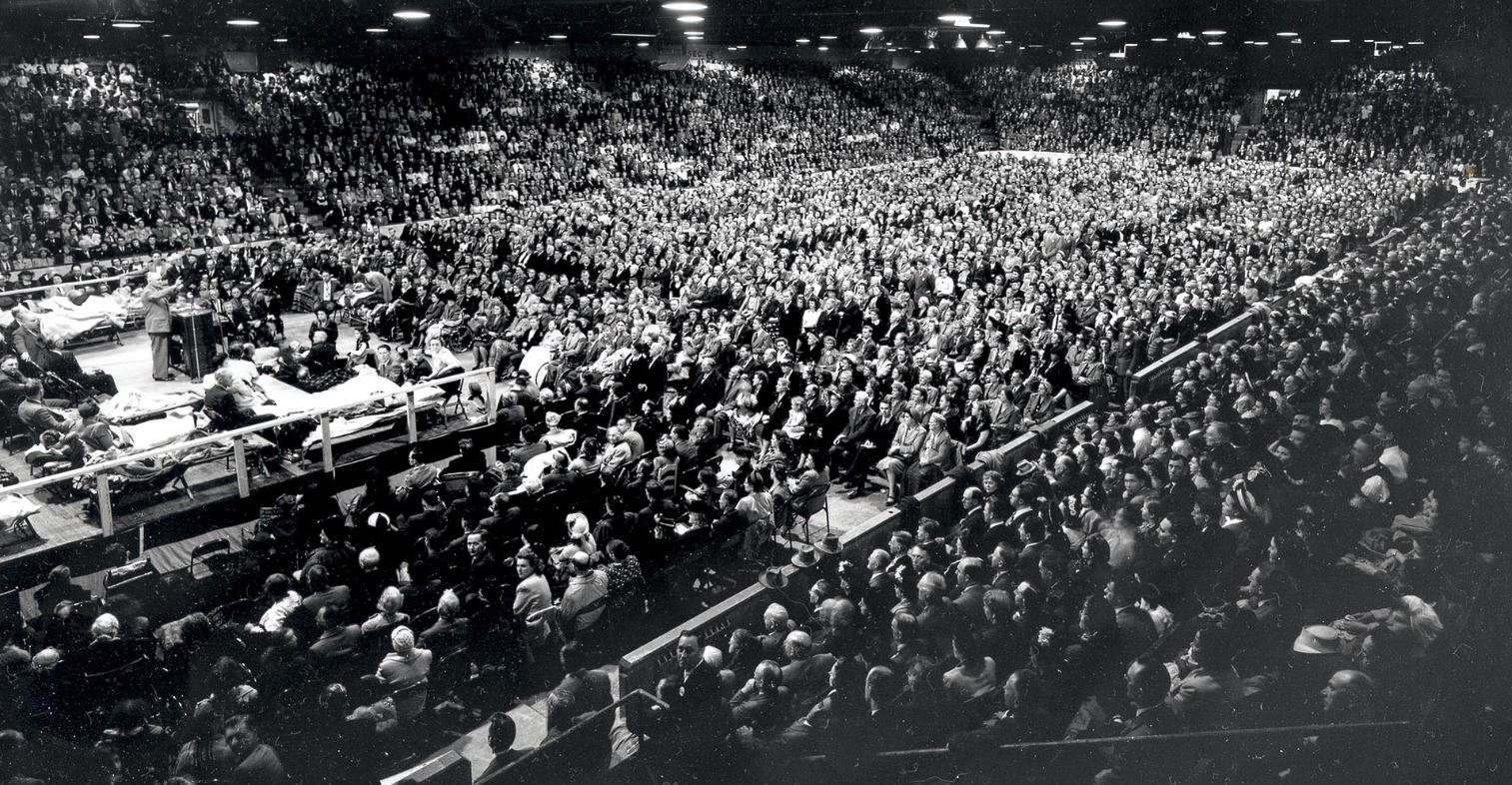
William Branham meeting: Tacoma, Washington – 1948
Introduction
The theology of healing, as well as healing ministries, had been in existence since the mid-1800s. The pioneers were individuals like Charles Cullis, A. B. Simpson, Maria Woodworth-Etter, and John Alexander Dowie.
As the Pentecostal denominations began to form in the early 1900s, and then splinter into many sub-sects, there were those who began seeking God for more of His power, beyond speaking in other languages which the Pentecostals primarily focused on.
The Healing Revival that began in 1947 satisfied this longing for more of God, for at this period of time many high-profile men and women began crisscrossing the United States and other nations, holding large (and small) meetings, displaying God’s healing power.
The Start of the Revival
The healing revivalist, William Branham, is said to have been the spark behind this revival, which began with the series of meetings he held in St. Louis, Missouri, in June 1946.
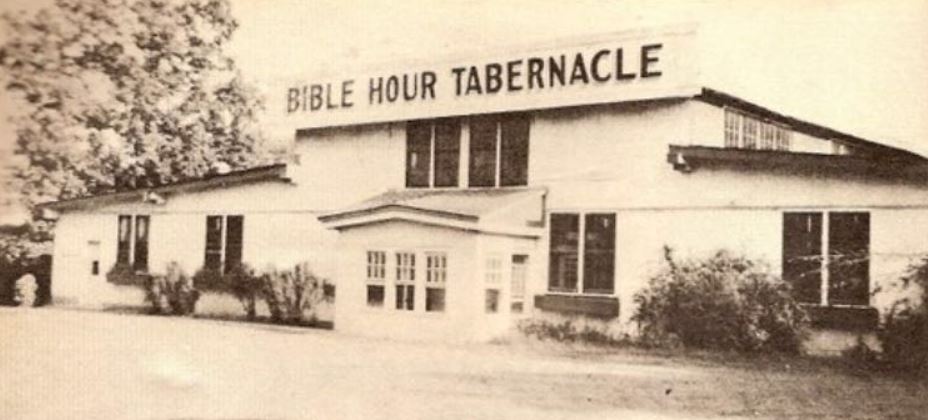
Bible Hour Tabernacle: Jonesboro, Arkansas
Seeing the results of Branham’s ministry in St. Louis, a pastor from Jonesboro, Arkansas, at the Bible Hour Tabernacle, invited Branham to come and hold meetings. And according to Branham’s biographer, Gordon Lindsay,
People gathered to the little city from twenty-eight states and Mexico, and some 25,000 people, it is estimated, attended the meeting.
Following Branham’s rise in popularity there came another notable healing revivalist, Oral Roberts. These two men were the main forerunners of the Healing Revival.
It was then that scores of other men and women picked up on what they saw God doing and joined in by launching their own ministries.
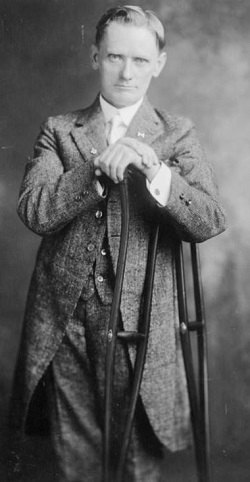
Congressman
William D. Upshaw: c. 1919
(note the crutches)
Verifiable Miracles
When a former United States Congressman, William D. Upshaw, was healed in a 1951 William Branham meeting in Los Angeles, California, it made a dramatic impact on the masses.
Knowing that Upshaw had spent 59 of his 66 years walking with the use of crutches, and had been bedridden for 7 years, this healing, and others like it, communicated that divine healing was real.
The news of healings like this elevated the faith and hope of tens of thousands who were desperate for personal healing, or for healing for their loved ones. Individuals would then travel any distance to have the opportunity to be prayed for by these healing evangelists.
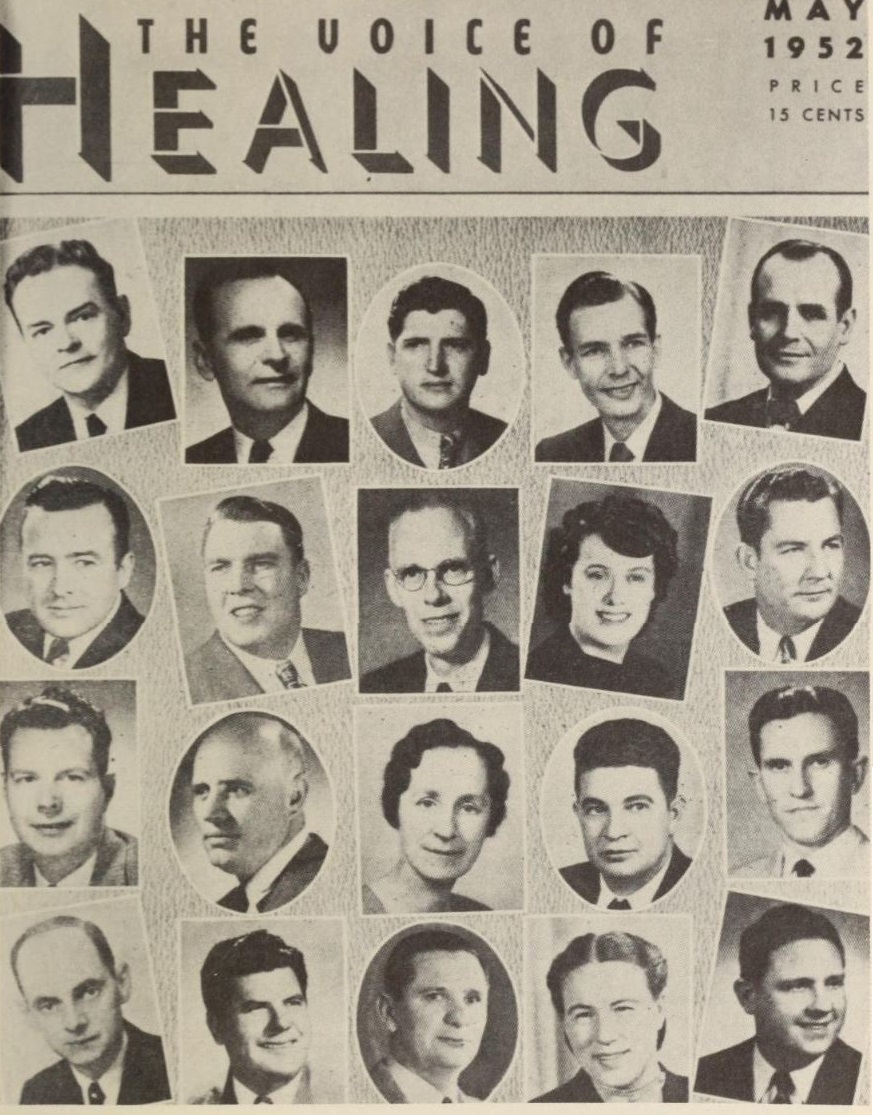
May 1952 Voice of Healing Magazine
with prominent editors and evangelists:
First row top: A. A. Allen, William Branham; Jack Coe; Clifton Erickson; Velmer Gardner
Second row: W. V. Grant; Dale Hansen; H. E. Hardt; Fern Huffstutler; Gayle Jackson
Third row: Gordon Lindsay; Jack Moore; Louise Nankivell; Wilber Ogilvie; T. L. Osborn
Fourth row: Raymond T. Ritchey; A. C. Valdez, Jr.; R. R. Vinyard; Mildred Wicks; Doyle Zachery
Voice of Healing Magazine
Gordon Lindsay was the publicist behind the Healing Revival. His administrative abilities are what laid the foundation for the promotion and communications for the revival and its varied aspects.
To enable him to do this job, Lindsay, along with Jack Moore, launched the Voice of Healing Magazine, with the first issue being released in April 1948. It was first initiated to promote William Branham, but in time it was promoting dozens of evangelists who met their standards of ministerial integrity and maturity. This magazine was used to get many of the evangelists’ ministries off the ground.
The healing testimonials in the magazine were like the wind in the sails for the revival. Before-and-after x-rays were very valuable proof and were frequently published. Even so, medical doctors were reluctant to sign their names to statements indicating a miraculous cure, because they didn’t want to get involved in religious debates. The American Medical Association also took the position that “all miracle cures were the result of either suggestion, spontaneous remission, or wrong diagnosis.” Some also claimed that the healings were psychosomatic.
Forty-seven issues of the Voice of Healing Magazine can be read here.
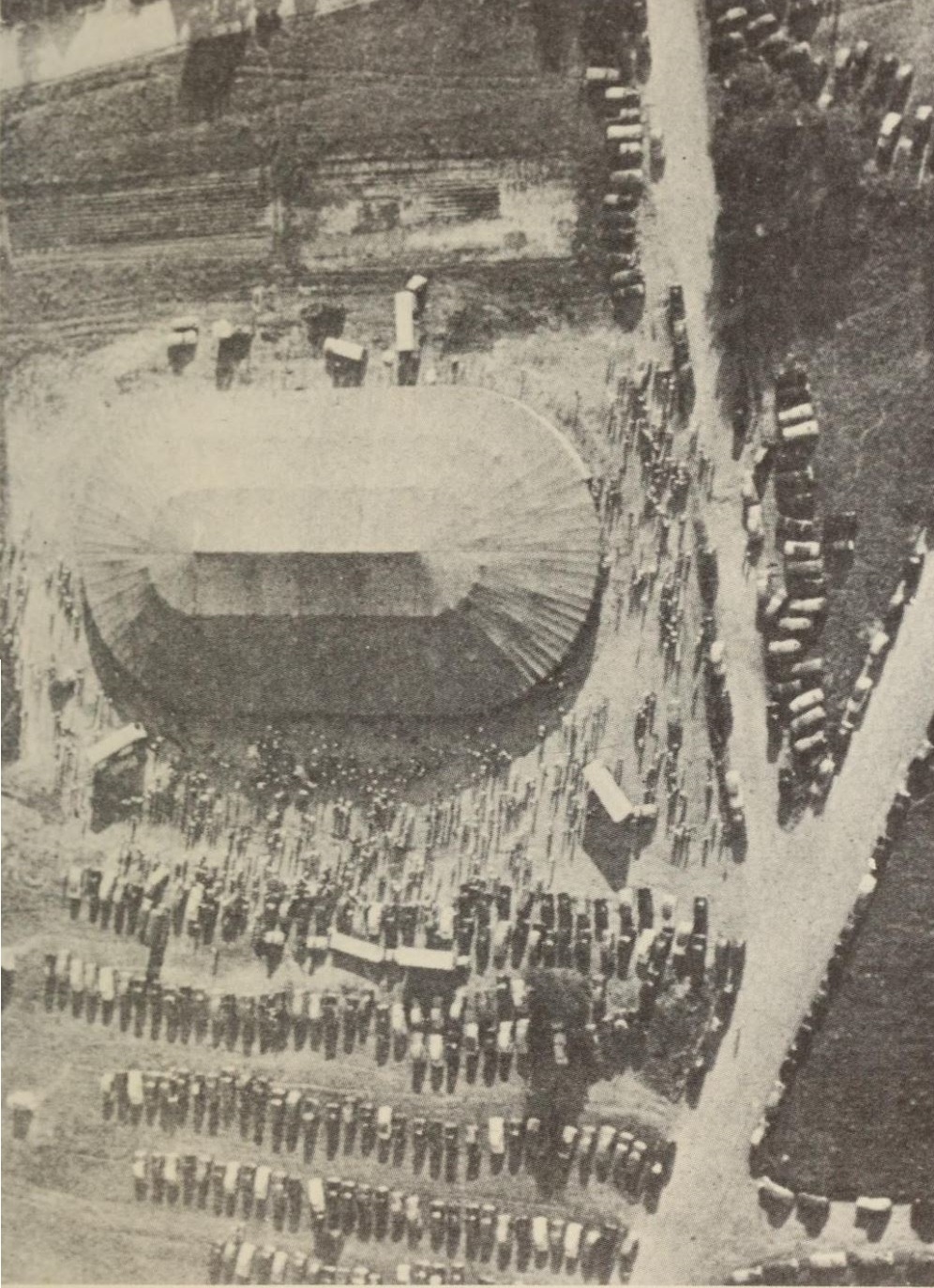
Jack Coe tent – 1951
Voice of Healing Association
After a December 1949 Voice of Healing convention held in Dallas, Texas, the healing evangelists united in a loose association, with Gordon Lindsay providing oversight. Those part of the association were approved or disapproved based on ministerial experience and integrity.
Between 1950 and 1956, there were over 100 evangelists who were associated with the Voice of Healing.
Over time the Voice of Healing became Christ for the Nations, which has a Bible institute, and is involved throughout the world building churches and networking international Bible schools.
We have included here some of the main healing evangelists, including the pioneers in the 1800s and early 1900s, arranged by order of birthdate.
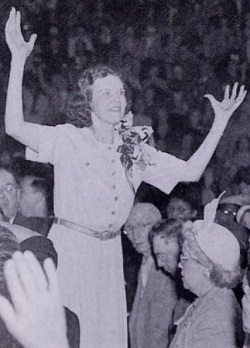
Kathryn Kuhlman
One of many female
evangelists (late 1940s)
Criticism, Skepticism, Attacks, Unsanctified Leaders
Whenever there is a genuine revival you can be assured that there will be many problems associated with them. Here are a few of the problems that were experienced during this revival:
► The news media was largely unfavorable towards the revival.
► Churches and pastors had a low view of what was occurring, as some of the evangelists would say negative things about the churches or the denominations.
► Church offerings would suffer during and after an evangelist’s visit to a community.
► Denominational leaders desired to keep the movement under their control, but the evangelists that gained prominence found denominational systems too rigid, and they often separated from them, and in the process caused tremendous tension.
► Some of the evangelists were using high-pressure fundraising efforts, and their lavish lifestyles repulsed many people.
► There were accusations of fraud.
► There were doctrinal conflicts.
► Jealousy and competitiveness led to bitterness between some of the evangelists.
► Some of the evangelists were promoting sensational stories, making claims of healings that did not occur.
► More than one evangelist would tell the people not to visit a doctor, and that they should trust God for their healing. This led to at least one prominent evangelist, Jack Coe, being arrested for practicing medicine without a license. (The case was dismissed.)
► Very young children, as young as age 4, were groomed to preach (some considered it exploitation for fundraising), causing major problems in the coming years (Marjoe Gortner).
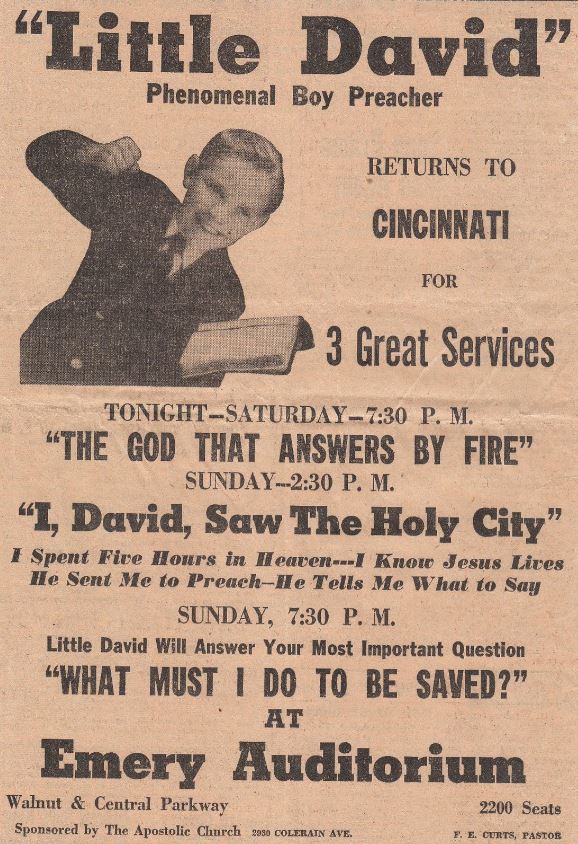
“Little” David Walker was one of the boys that held meetings during the revival.
The Decline of the Revival
By 1958 the Healing Revival was clearly fading away. Even though most of the evangelists had been sincere and honest, the ones that were not, with their fantastic and dubious healing claims and high-pressure fundraising, led to the withdrawal of support from denominations and churches.
Another reason credited for the decline was that the miracles became too commonplace, and they were no longer a fascination with the masses.
With attendance dropping and funds drying up, most evangelists were forced into a pastoral position or out of the ministry.
Results of the Revival
► The doctrine of divine healing was made popular.
► There were many thousands of genuine healings.
► Tens of thousands were converted to Christ.
► Pentecostalism was revitalized.
► It paved the way for the Charismatic Movement and the Catholic Charismatic Renewal.
► It spawned the Full Gospel Business Men’s Fellowship International.
► It gave the impetus for the Latter Rain Movement in Canada.
► Many missionaries received a call to foreign mission work.
► Initiatives in evangelism spread around the globe.
► It was an extensive display of God’s power.
► Walls between those of differing doctrines came down.
► The new generation of denominational leaders was less sectarian than were the founders of American Pentecostalism.
► Racial openness occurred, with blacks and whites often intermingling on platforms and in general tent seating.
► Respect for Pentecostalism began to emerge.
► The use of television for preaching the Gospel was pioneered.
► Pentecostal-type churches flourished and spread into the developing world, with national believers replicating and surpassing the American healing pioneers of the 1950s.

Oral Roberts tent: Florence, South Carolina – 1955
Legacy of Oral Roberts
Out of the long list of evangelists that were active during the Healing Revival, Oral Roberts stands out, as he left a legacy that will live on for years to come. That legacy is the Oral Roberts University, which was started in 1963. Today the student body numbers around 4,000.
The second lasting impression Roberts left was the prestige he brought to Pentecostalism, as David E. Harrel said:
No one had done more to bring the Pentecostal message to respectability and visibility in America; Roberts was the most important artifact of the great revival which had taken the Holy Spirit from the ghetto into the nation’s plushest hotels.
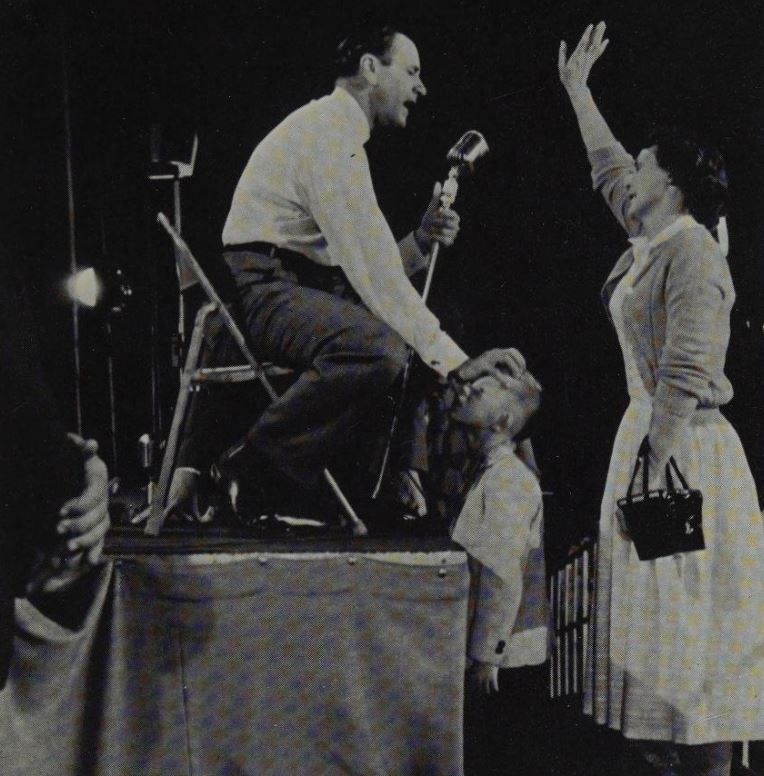
Oral Roberts praying for a boy – Pensacola, Florida – 1957
Oral Roberts, as well as many other evangelists, would sit down while praying for the sick, as some services would last 4-5 hours.
Sources
► 10,000 Miles for a Miracle by Kathryn Kuhlman
► All Things Are Possible by David E. Harrell, Jr.
► Daughter of Destiny by Jamie Buckingham
► Give Me that Prime-Time Religion by Jerry Sholes
► Healing and Revival by healingandrevival.com
► Healing Revival by Revival Library
► Healing Revival by Wikipedia
► Healing Through the Centuries by Ronald Kydd
► Kathryn Kuhlman by Benny Hinn
► Kathryn Kuhlman by Helen Hosier
► Miracle Workers, Reformers, and the New Mystics by John Crowder
► Oral Roberts: An American Life by David E. Harrell,Jr.
► Smith Wigglesworth – Apostle of Faith by Stanley Frodsham
► The 1947-1957 Healing Revival by Voiceofhealing.info
► The Healer-Prophet, William M. Branham by C. Douglas Weaver
► The Price of God’s Miracle Working Power by A. A. Allen
► The Revival of the Gifts of Healing by Annie E. Wood
► Voice of Healing Magazine – 47 issues
► William Branham: A Man Sent from God by Gordon Lindsay
Videos
► A. A. Allen the Miracle Man by dan0365
► Jack Coe by cchrisjk
► Little David Walker God’s Gift to the Church by John Collins
► Marjoe Gortner by PlowshareBeater
► Oral Roberts by Voice of Revival
► William Branham Miracles by Voice of Revival
Return to List of Revival Stories
Chet & Phyllis Swearingen:
Office: (260) 920-8248
romans1015@outlook.com
Beautiful Feet
P.O. Box 915
Auburn, IN 46706

